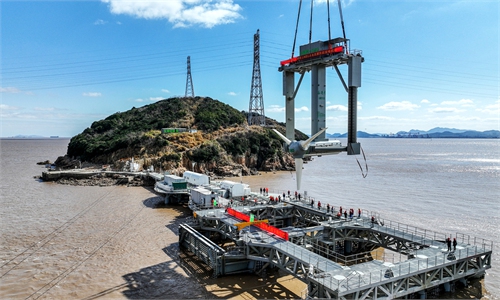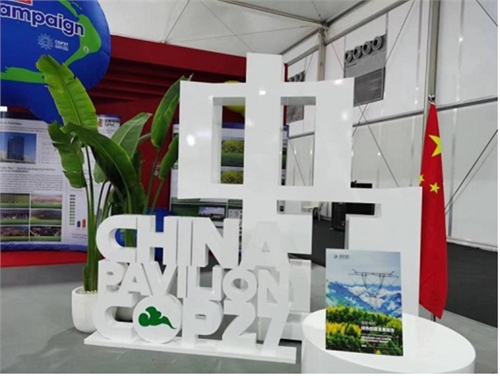China's greenhouse gas monitoring system in Qinghai-Xizang Plateau added to GCP's list, to provide accurate data for global carbon budget assessment

Photo taken on May 1, 2021 shows Gongga Mountain seen from the top of the Niubei Mountain in southwest China's Sichuan Province. The Niubei Mountain, with an altitude of 3,600 meters, spans from Yingjing County to Luding County in southwest China's Sichuan. There is a scenic area on its top under construction, with a sightseeing platform, a parking lot, a wooden house hotel and a tent hotel. (Xinhua/Jiang Hongjing)
The China-developed advanced greenhouse gas monitoring system GONGGA has been added to the list of global greenhouse gas monitoring systems by the Global Carbon Project (GCP) to help provide accurate data for the world's carbon budget assessment, Chinese scientists said.
GONGGA, sharing the name of the highest mountain in Southwest China's Sichuan Province, was developed by scientists participating in the second scientific research expedition on the Qinghai-Xizang (Tibet) Plateau, which began in 2017. The system's full name is the Global Observation-based System for Monitoring Greenhouse Gas, according to a statement the Global Times obtained from the Chinese Academy of Sciences (CAS) on Thursday.
It can systematically assess the global sources and sinks of CO2 to help understand the characteristics of changes in global greenhouse gas concentrations, where they come from, and how they are distributed in the atmosphere, oceans and ecosystems, according to the statement.
The system had been added to the list of global greenhouse gas monitoring systems after the independent appraisal by the GCP, scientists from the CAS announced at an academic symposium on Wednesday.
The GCP's appraisal showed that the CO2 growth rate the GONGGA system provided was more accurate than that of the National Oceanic and Atmospheric Administration of the US, Piao Shilong, deputy director of the Institute of Tibetan Plateau Research of the CAS, said at the symposium.
China has been a data provider for the program for years, but it didn't have an indigenously developed monitoring and evaluation system for greenhouse gas, Piao said. He noted that GONGGA being included in the list indicated that Chinese scientists have switched their role from data contributors to global leaders in atmospheric inverse modeling.
The move reversed China's reliance on foreign monitoring systems. Chinese scientists now can use their own data, methods and models to clearly figure out China's own carbon budget, the CAS said in a statement to the Global Times on Thursday.
The application of GONAGA will also strengthen China's international power of discourse in carbon budget assessment. For example, it will provide accurate data for the first in a series of global "stock takes" scheduled in 2023 to assess progress on Paris Agreement goals in 2023, according to the statement.
According to the Paris Agreement, a first Global Stocktakes will take place in 2023 and every five years thereafter, in a bid to assess collective progress toward achieving the purpose of the agreement in a comprehensive and facilitative manner.
Pep Canadell, executive director of the GCP, said in a video address to the Wednesday symposium that he appreciated China's contribution to the program and hopes the country can become more deeply involved.
The GCP is an international program launched in 2001 to study anthropogenic emissions and natural sinks of carbon. It publishes the annual Global Carbon Budget, a highly influential report that reveals the latest trends in the global carbon cycle and implications for future emission reductions.
Chinese scientists also revealed their latest achievements at the Wednesday symposium.
Zhai Panmao, a researcher from the Chinese Academy of Meterological Sciences, said that the rapid warming of the Qinghai-Tibet Plateau since the 20th century has been unprecedented in the past 2,000 years. This reveals that, driven by global greenhouse gas emissions related to human activities, the Qinghai-Xizang Plateau began to continuously and rapidly warm up, and the temperature rise rate nearly doubled in the early 20th century and also in the mid-1970s.
Zhou Tianjun, a researcher from the Institute of Atmospheric Physics with the CAS, said that the warming and humidification characteristics of the main body of the Qinghai-Xizang Plateau will continue in the next decade, and the long-term change will be determined by the greenhouse gas emission scenario.
The increase under the extremely high emission scenario is estimated to be nearly three times that of the extremely low emission scenario, according to Zhou.



